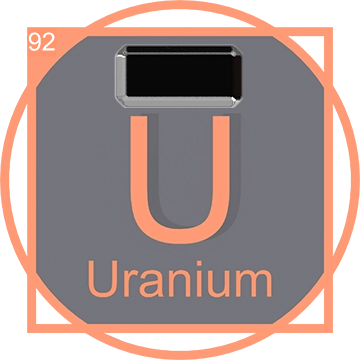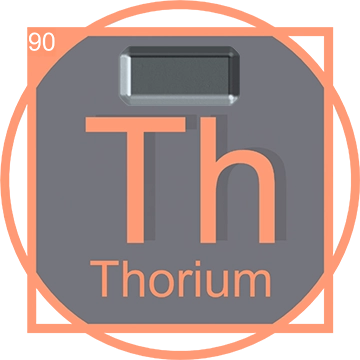Introduction to Actinium (Ac) in the Periodic Table
In the vast expanse of the periodic table, Actinium (symbol Ac) captivates with its mysterious glow and radioactive nature. This article explores "what is Actinium used for," delves into "Actinium properties," and unveils where this elusive element is found, shedding light on its significance in science and technology.
Discovered in 1899 by Friedrich Oskar Giesel, this silvery radioactive element has intrigued scientists with its luminescence and complex properties. Its name, derived from the Greek word "aktinos," meaning ray or beam, aptly reflects its radiant nature. As the first member of the actinide series, Actinium has paved the way for research into the properties of heavy, radioactive elements.
Unveiling Actinium's Properties and Uses
Actinium, a member of the actinide series, is known for its strong radioactivity and unique position in the periodic table. Those curious about "Actinium on the periodic table" will find it with an atomic number of 89, marking the beginning of this series. Its properties are intriguing, with a metallic appearance that glows in the dark due to its radioactivity. This leads to the question, "What are the uses of Actinium?" Despite its scarcity, Actinium's isotopes, particularly Actinium-225, are researched for targeted alpha therapy in cancer treatment, showcasing its potential in medical advancements.
Where is Actinium Found?

"Where is Actinium found?" is a common query among those exploring this element. Naturally occurring Actinium is derived from the decay of uranium and thorium ores, present only in trace amounts. It's not mined directly but extracted from the residues of uranium ore processing. This scarcity underlines the challenges and innovations in synthesizing Actinium for research and medical use.
Here are some locations:
- Canada: The Athabasca Basin in Saskatchewan is renowned for its high-grade uranium deposits.
- Australia: The Olympic Dam and Ranger mines in South Australia and the Northern Territory, respectively, are substantial sources.
- Kazakhstan: The Inkai and Central Mynkuduk mines are pivotal to uranium extraction in Kazakhstan, indirectly contributing to Actinium's availability.
- Namibia: The Rossing and Husab uranium mines are among the largest in the world.
- Russia: The Streltsovskoe uranium ore field in Siberia is a significant source.
Exploring Actinium in the Periodic Table
For students and educators asking, "How is Actinium represented in the periodic table?" or "What is the significance of Actinium in the periodic elements?" Actinium serves as a gateway to understanding the actinide series' chemistry and physics. Its position and properties provide insight into the behaviors of heavy radioactive elements, contributing to advancements in nuclear science and technology.
Actinium's Role in Modern Science and Medicine

The exploration of "Actinium applications" reveals its emerging role in modern medicine, particularly in treatments targeting specific cancer types. This has sparked interest in "How is Actinium produced?" Most Actinium-225, used in medical treatments, is produced in nuclear reactors or particle accelerators, highlighting the intersection of nuclear physics and healthcare.
Safety and Environmental Considerations
Handling Actinium, given its radioactivity, requires strict safety protocols. Research into "Actinium safety precautions" is vital for scientists and medical professionals working with this element, ensuring safe usage and minimizing potential environmental impacts.
Conclusion: The Future of Actinium Research
As we delve deeper into the "research on Actinium," its potential in science and medicine continues to expand. The quest for knowledge about this radiant element reflects the broader scientific endeavor to harness the periodic table's elements for the betterment of humanity.
How Actinium Could Transform Our Homes: A Look Into the Future
Actinium-Based Home Medical Devices

With the growing interest in "what is Actinium used for," it's fascinating to consider its potential in revolutionizing home healthcare. Actinium-225's role in "targeted alpha therapy" hints at future devices for treating cancer at home, providing a new dimension to "home cancer treatments with Actinium."
Revolutionizing Home Energy with Actinium
"Actinium in energy production" reveals possibilities for using this element in compact, efficient home energy systems. The idea of "nuclear energy for home use" could leap forward with Actinium-based technologies, ensuring safe and sustainable power sources.
Next-Generation Actinium Security Systems
Queries about "using Actinium in home security" uncover potential applications for Actinium's radioactivity in advanced detection systems. This could redefine "radiation-based security solutions," offering unparalleled safety measures.
Environmental Monitoring Powered by Actinium

The question of "how Actinium can detect home pollutants" leads to innovative environmental monitoring solutions. These systems could vastly improve "home safety and environmental health," leveraging Actinium's sensitivity to various compounds.
Navigating the Challenges
The discussion around "Actinium safety measures" is crucial as we explore its home applications. Ensuring "safe use of radioactive elements at home" will be paramount, addressing valid concerns about radiation.
The Road Ahead for Actinium Applications
As we dive deeper into "research on Actinium," its future in home technology looks promising yet speculative. The journey from "Actinium's current uses" to "innovative home applications" will be guided by breakthroughs in safety and technology.
How is Actinium Made?
Actinium, a rare and radioactive element, is predominantly produced through neutron irradiation of Radium-226 or Thorium-232. This process typically occurs in a nuclear reactor, where Radium-226 or Thorium-232 is bombarded with neutrons, leading to a series of nuclear reactions that ultimately yield Actinium-227. While trace amounts of Actinium can also be found in uranium ores as part of natural decay chains, the synthetic production of Actinium-225, highly sought after for medical applications like targeted alpha therapy, involves complex irradiation techniques in advanced nuclear facilities, highlighting the innovative intersection of nuclear physics and medical science.












